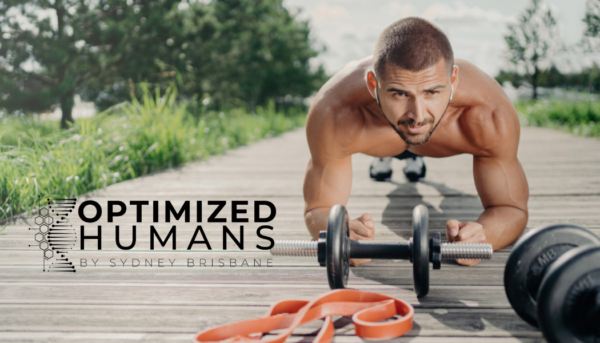 How Alcohol Impacts Your Mental and Physical Performance
How Alcohol Impacts Your Mental and Physical Performance
Alcohol isn’t just a social indulgence; it’s a substance that can significantly affect both your mental and physical performance. Whether you’re an athlete trying to stay at peak fitness or simply aiming to stay sharp at work, understanding how alcohol impairs your abilities is essential.
The Effects on Mental Performance
Alcohol has a direct impact on the brain, altering how it functions on multiple levels:
- Impaired Cognitive Functions: Alcohol reduces your ability to concentrate, process information, and make decisions. Even moderate drinking can slow your reaction times and impair short-term memory.
- Increased Stress and Anxiety: While alcohol might temporarily reduce feelings of stress, it can cause increased anxiety and stress in the long run due to its effects on neurotransmitter balance.
- Decreased Productivity: Drinking the night before work can lead to brain fog, lack of motivation, and decreased productivity, making it harder to stay focused and accomplish tasks efficiently.
The Effects on Physical Performance
Alcohol’s impact on your body is just as detrimental:
- Slower Recovery Time: Alcohol interferes with your body’s ability to recover from workouts. It dehydrates muscles, hampers protein synthesis, and reduces your energy levels, all of which can delay recovery after exercise.
- Decreased Strength and Endurance: Drinking reduces muscle coordination and decreases your physical performance by impairing your motor skills and weakening your stamina. This makes it harder to maintain peak fitness levels.
- Disrupted Sleep: Alcohol can significantly disrupt sleep patterns, leading to poor-quality rest. Since sleep is essential for physical recovery and overall health, this can have lasting negative effects on your performance.
By reducing or eliminating alcohol from your lifestyle, you can see marked improvements in your mental clarity, physical strength, and overall well-being.
Ready to take your health to the next level? With Optimized Humans, you can access personalized workout and nutrition plans, support for your wellness goals, and a community to keep you motivated. Sign up today and receive a special discount on your membership by mentioning this blog! Start your Sober October challenge with us, and take the first step towards a fitter, healthier, and more optimized you.
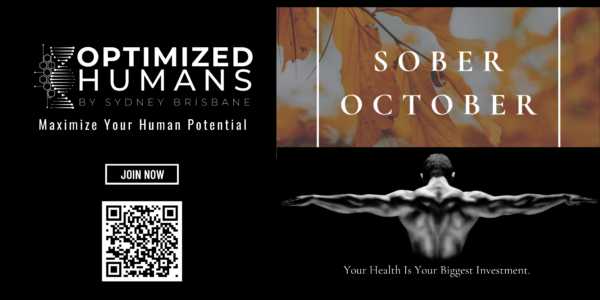
As summer sets in, taking your workouts outdoors can be an invigorating way to enjoy the season while staying fit. Whether you’re running through the park, cycling along scenic routes, or practicing yoga on the beach, outdoor exercises offer a refreshing change from the gym. The Optimized Humans program is designed to help you make the most of your outdoor workouts, providing personalized guidance, tracking progress, and offering tips for various environments. Here’s how you can optimize your training with our program.
Benefits of Outdoor Workouts
Outdoor workouts come with numerous benefits that can enhance both your physical and mental well-being:
- Fresh Air and Sunshine: Exercising outdoors exposes you to fresh air and natural light, boosting your mood and providing essential vitamin D.
- Varied Terrain: Running or cycling on varied terrain can challenge your muscles differently, improving strength and endurance.
- Mental Health Boost: Nature has a calming effect, reducing stress and anxiety, and improving overall mental health.
- Engagement and Fun: Outdoor workouts can be more engaging and fun, keeping you motivated and helping you stick to your fitness routine.
Tips for Outdoor Exercises
To get the most out of your outdoor workouts, consider these tips:
- Plan Your Route: Choose safe and scenic routes for running, cycling, or walking. Familiarize yourself with the area and ensure it’s suitable for your fitness level.
- Dress Appropriately: Wear moisture-wicking clothing to keep cool and comfortable. Don’t forget a hat and sunglasses to protect yourself from the sun.
- Stay Hydrated: Bring water with you and take regular breaks to stay hydrated, especially during intense activities.
- Warm Up and Cool Down: Begin with a dynamic warm-up to prepare your muscles and end with a cool-down to prevent stiffness and soreness.
- Be Weather Aware: Check the weather forecast and plan your workouts accordingly. Avoid extreme heat and be prepared for sudden weather changes.
Optimized Humans: Your Outdoor Workout Companion
The Optimized Humans app is your ultimate companion for outdoor workouts, offering features that guide and track your progress in various environments:
- Personalized Workout Plans: The app creates customized workout plans based on your fitness goals, whether you’re focusing on cardio, strength, flexibility, or a combination of all three.
- GPS Tracking: Track your runs, walks, and cycling routes with GPS. The app logs distance, speed, and elevation, giving you detailed insights into your performance.
- Voice Coaching: Receive real-time coaching cues to keep you motivated and ensure you’re maintaining proper form. Voice coaching can also remind you to hydrate and take breaks.
- Progress Monitoring: Monitor your progress with detailed statistics and performance summaries. The app tracks your improvements and adjusts your workout plans accordingly.
- Community Challenges: Join community challenges and compete with other users. This adds a fun, social element to your workouts, keeping you motivated and accountable.
Outdoor Workout Ideas
Here are some outdoor workout ideas to try with the guidance of the Optimized Humans app:
- Running and Jogging: Use the app’s GPS tracking and voice coaching features to improve your running technique and endurance. Set goals for distance, time, or pace and track your progress.
- Cycling: Plan scenic cycling routes and monitor your speed, distance, and elevation. The app provides personalized cycling workouts to help you build strength and stamina.
- Bodyweight Exercises: Perform bodyweight exercises like push-ups, squats, lunges, and planks in your backyard or a local park. The app offers guided routines and ensures you’re performing each move correctly.
- HIIT Workouts: High-Intensity Interval Training (HIIT) can be done anywhere. Follow the app’s HIIT workouts that combine short bursts of intense exercise with periods of rest or low-intensity activity.
- Yoga and Stretching: Practice yoga and stretching routines on the beach, in a park, or in your backyard. The app provides guided sessions to improve flexibility and relaxation.
Conclusion
Optimizing your outdoor workouts with the Optimized Humans app ensures you stay fit, motivated, and engaged all summer long. By following personalized workout plans, tracking your progress, and utilizing the app’s features, you can enjoy the benefits of outdoor exercises while achieving your fitness goals. Embrace the great outdoors, breathe in the fresh air, and let the Optimized Humans program guide you to a healthier, happier you. Download the app today and take your workouts to the next level, wherever your adventures take you.
Exclusive OFFER For YOU!
Unlock your potential with a complimentary 14-day trial of our #OptimizedHumans program! 🚀 Dive into customized workouts, expert guidance, and transformative resources designed to enhance your physical and mental well-being. 💪 Join hands with Sydney and our dedicated team to embark on a personalized fitness journey tailored just for you. Together, we’ll optimize your health and set you on the path to success. Plus, discover how we collaborate with companies to boost employee efficiency through tailored workout and nutrition plans. Don’t wait any longer—start your journey to optimal living today at optimizedhumans.life!
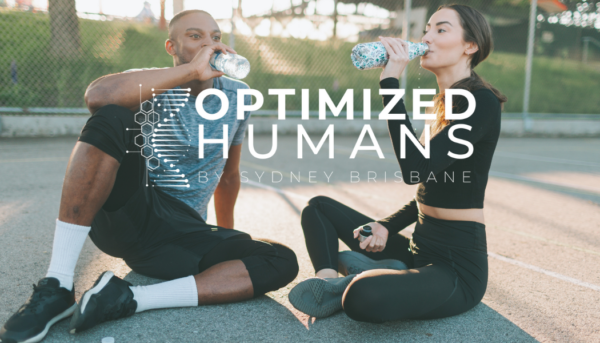
As the summer sun blazes, your workouts might feel more intense, and your body will undoubtedly work harder. Proper post-workout recovery becomes even more crucial during hot weather to ensure your body recovers efficiently and remains injury-free. The Optimized Humans program offers expert advice and resources to help you optimize your recovery. Here are the best practices for post-workout recovery in hot weather, including stretching routines and nutrition tips available in our program.
Hydration is Key
One of the most important aspects of recovery, especially in hot weather, is staying hydrated. Your body loses more fluids through sweat, so replenishing these is essential.
1. Rehydrate Immediately: Drink plenty of water immediately after your workout. Aim for at least 16-24 ounces of water within the first 30 minutes post-exercise.
2. Electrolyte Balance: Consuming drinks with electrolytes can help replenish lost salts and minerals. Consider coconut water or specially formulated electrolyte drinks.
3. Monitor Your Hydration: Check the color of your urine; a pale yellow indicates proper hydration, while darker urine suggests you need to drink more fluids.
Effective Cooling Down
Cooling down helps bring your heart rate back to normal and prevents muscle stiffness. The Optimized Humans program offers guided cool-down routines to ensure you recover properly.
1. Gradual Cool-Down: Spend at least 5-10 minutes walking or performing low-intensity movements to gradually reduce your heart rate.
2. Static Stretching: Incorporate static stretches targeting the major muscle groups you worked during your exercise. Hold each stretch for 20-30 seconds to improve flexibility and reduce muscle tension.
3. Deep Breathing: Practice deep breathing exercises to promote relaxation and aid in the recovery process. This helps lower your heart rate and can reduce post-workout stress.
Stretching Routines for Optimal Recovery
Stretching is a crucial part of the recovery process, especially after intense workouts in hot weather. The Optimized Humans app includes comprehensive stretching routines designed to enhance recovery.
1. Full-Body Stretch Routine: Focus on a full-body stretching routine that targets all major muscle groups. This can help improve flexibility, reduce muscle soreness, and prevent injuries.
2. Yoga and Mobility Work: Incorporate yoga and mobility exercises to enhance your recovery. These practices help improve joint mobility, reduce muscle stiffness, and promote relaxation.
3. Foam Rolling: Use a foam roller to release muscle tension and improve blood flow to your muscles. The app provides guided foam rolling exercises for different muscle groups.
Nutrition for Recovery
What you eat after your workout plays a significant role in your recovery. The Optimized Humans program offers personalized nutrition plans to help you refuel and repair your body.
1. Protein Intake: Consume a protein-rich snack or meal within 30-60 minutes post-workout to support muscle repair and growth. Options include protein shakes, Greek yogurt, or a turkey sandwich.
2. Carbohydrates for Energy: Pair your protein with carbohydrates to replenish glycogen stores and provide energy for recovery. Good options include fruits, whole grains, and vegetables.
3. Healthy Fats: Include healthy fats in your post-workout meal to support overall recovery and reduce inflammation. Avocados, nuts, and olive oil are excellent choices.
4. Antioxidant-Rich Foods: Consume foods rich in antioxidants to combat oxidative stress caused by intense exercise. Berries, leafy greens, and nuts are great options.
Rest and Sleep
Adequate rest and quality sleep are essential for optimal recovery. The Optimized Humans program provides tips and techniques to improve your sleep hygiene.
1. Prioritize Sleep: Aim for 7-9 hours of sleep each night to allow your body to recover fully. Sleep is when your body repairs muscles, consolidates memory, and releases growth hormones.
2. Create a Relaxing Environment: Ensure your sleep environment is cool, dark, and quiet. Consider using blackout curtains, earplugs, or a white noise machine to enhance sleep quality.
3. Consistent Sleep Schedule: Maintain a consistent sleep schedule by going to bed and waking up at the same time each day, even on weekends.
Conclusion
Recovering properly after workouts, especially in hot weather, is essential to maintain your fitness progress and overall well-being. By following these best practices for hydration, cooling down, stretching, nutrition, and rest, you can optimize your recovery and continue to perform at your best. The Optimized Humans program is here to support you with personalized recovery plans, expert advice, and comprehensive resources. Embrace these recovery techniques to stay healthy, energized, and ready for your next workout, no matter how high the temperature rises.
Exclusive Deal For You!
Unlock your potential with a complimentary 14-day trial of our #OptimizedHumans program! 🚀 Dive into customized workouts, expert guidance, and transformative resources designed to enhance your physical and mental well-being. 💪 Join hands with Sydney and our dedicated team to embark on a personalized fitness journey tailored just for you. Together, we’ll optimize your health and set you on the path to success. Plus, discover how we collaborate with companies to boost employee efficiency through tailored workout and nutrition plans. Don’t wait any longer—start your journey to optimal living today at optimizedhumans.life!

As July ushers in the height of summer, it’s the perfect time to focus on three vital health topics that are particularly relevant this season: sun safety, hydration, and healthy summer eating. By paying attention to these areas, you can ensure a fun, safe, and healthy summer for you and your loved ones.
Sun Safety and Skin Health
Summer means longer days and more sunshine, but it also brings an increased risk of sunburn and skin damage. Protecting your skin from harmful UV rays is essential to prevent issues ranging from painful sunburns to long-term risks like skin cancer.
1. Sunscreen is a Must: Apply a broad-spectrum sunscreen with an SPF of at least 30 every day, even on cloudy days. Reapply every two hours, and more often if you’re swimming or sweating.
2. Protective Clothing: Wear lightweight, long-sleeved shirts, wide-brimmed hats, and UV-blocking sunglasses to cover your skin and eyes. Clothing with a UPF (Ultraviolet Protection Factor) rating offers extra protection.
3. Seek Shade: Avoid direct sunlight during peak hours (10 a.m. to 4 p.m.). If you’re outside, find or create shade with umbrellas, canopies, or trees.
4. Know Your Skin: Regularly check your skin for any changes or new moles. Early detection is crucial for successful treatment of skin cancer. If you notice any suspicious changes, consult a dermatologist promptly.
Taking these steps ensures you can enjoy the sun safely and keep your skin healthy and radiant.
Hydration and Heat-Related Illnesses
High temperatures can quickly lead to dehydration and heat-related illnesses like heat exhaustion and heat stroke. Staying hydrated is crucial for maintaining your health during the hot summer months.
1. Drink Plenty of Water: Aim to drink at least 8-10 glasses of water a day. If you’re active or spending extended periods outside, you may need more. Carry a reusable water bottle with you to make it easy to stay hydrated on the go.
2. Eat Hydrating Foods: Incorporate water-rich foods into your diet, such as cucumbers, watermelon, strawberries, and lettuce. These not only hydrate but also provide essential vitamins and minerals.
3. Avoid Excessive Alcohol and Caffeine: Both can contribute to dehydration. If you do consume these, balance with extra water intake.
4. Recognize the Signs of Dehydration: Symptoms include dry mouth, fatigue, dizziness, and dark urine. If you experience any of these, increase your fluid intake immediately.
5. Stay Cool: Wear lightweight, loose-fitting clothing and take breaks in the shade or air-conditioned environments to prevent overheating.
By keeping these tips in mind, you can stay hydrated and healthy, even during the hottest days of summer.
Healthy Summer Eating
July offers a bounty of fresh, seasonal produce that’s both delicious and nutritious. Embracing these foods can enhance your health and make summer meals a delightful experience.
1. Seasonal Fruits and Vegetables: Take advantage of summer’s fresh produce. Berries, tomatoes, peaches, and leafy greens are at their peak, offering a range of flavors and health benefits. They’re rich in vitamins, antioxidants, and fiber, contributing to overall wellness.
2. Light and Fresh Meals: Opt for lighter meals that are easy to prepare and digest. Salads, smoothies, and grilled vegetables are excellent choices that keep you feeling energized without the heaviness of winter dishes.
3. Healthy Barbecues: If you’re grilling, choose lean proteins like chicken, fish, or plant-based options. Marinate with herbs, spices, and citrus juices instead of sugary sauces. Include plenty of grilled vegetables to add color and nutrients to your plate.
4. Stay Mindful of Portions: Summer gatherings often involve indulgent foods. Enjoy your favorites but be mindful of portion sizes to maintain a balanced diet.
5. Hydrating Beverages: Make your own refreshing drinks with natural ingredients. Infuse water with fruits and herbs, or make iced herbal teas to stay hydrated and avoid sugary sodas.
Embracing the vibrant flavors of summer produce not only enhances your meals but also boosts your health, keeping you refreshed and nourished during the hot months.
By prioritizing sun safety, hydration, and nutritious eating, you can make the most of July’s long days and warm weather. These practices will help you stay healthy, energized, and ready to enjoy all the fun activities that summer has to offer. Remember, taking care of yourself today sets the foundation for a healthier tomorrow. Enjoy your summer, stay safe, and make the most of this wonderful season!
Exclusive Promotion For You!
Unlock your potential with a complimentary 14-day trial of our #OptimizedHumans program! 🚀 Dive into customized workouts, expert guidance, and transformative resources designed to enhance your physical and mental well-being. 💪 Join hands with Sydney and our dedicated team to embark on a personalized fitness journey tailored just for you. Together, we’ll optimize your health and set you on the path to success. Plus, discover how we collaborate with companies to boost employee efficiency through tailored workout and nutrition plans. Don’t wait any longer—start your journey to optimal living today at optimizedhumans.life!
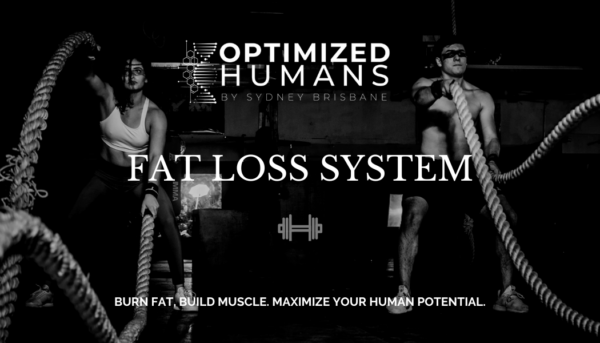
Summer is the perfect time to ramp up your fitness routine, take advantage of the beautiful weather, and work towards your health goals. Whether you’re looking to get in shape, stay active, or try new workouts, the Optimized Humans program offers the tools and guidance you need to maximize your summer fitness routine. Here’s how you can leverage the personalized workouts and features available in the Optimized Humans app to stay fit and motivated all summer long.
Personalized Workouts Tailored to Your Goals
One of the standout features of the Optimized Humans program is the ability to create personalized workout plans tailored to your individual goals. Whether you’re aiming to lose weight, build muscle, improve endurance, or simply maintain your current fitness level, the app offers a variety of workouts designed to meet your specific needs.
1. Customizable Plans: The app allows you to set your fitness goals and preferences, creating a workout plan that fits your schedule and interests. Whether you prefer strength training, cardio, HIIT, or a mix of everything, Optimized Humans has you covered.
2. Adaptive Workouts: The app adjusts your workout intensity based on your progress, ensuring you are continually challenged and making improvements. This adaptive approach helps prevent plateaus and keeps your fitness journey exciting.
3. Variety of Exercises: With a vast library of exercises and routines, you’ll never get bored. From yoga and Pilates to high-intensity interval training and weightlifting, the app offers something for everyone, catering to all fitness levels and interests.
Outdoor and Home Workouts
Summer is the ideal time to take your workouts outdoors. Optimized Humans provides a range of outdoor workout options that can be easily integrated into your fitness routine.
1. Outdoor Fitness Routines: The app features guided outdoor workouts such as running, cycling, and bodyweight exercises that can be performed in parks, beaches, or your backyard. Enjoy the fresh air and sunshine while staying active.
2. Home Workouts: If you prefer working out at home, Optimized Humans offers numerous routines that require minimal to no equipment. These workouts are perfect for days when you want to stay indoors or if you’re traveling and don’t have access to a gym.
3. Location-Based Recommendations: The app can suggest nearby parks, trails, and outdoor fitness spots, making it easier for you to find the perfect location for your workout.
Track Your Progress and Stay Motivated
Staying motivated is key to maintaining a consistent fitness routine, and Optimized Humans provides several features to help you stay on track.
1. Progress Tracking: The app allows you to track your workouts, monitor your progress, and set new goals. Visualizing your improvements can be incredibly motivating and help you stay committed to your fitness journey.
2. Personalized Feedback: Receive real-time feedback and tips from virtual trainers based on your performance. This personalized guidance ensures you’re performing exercises correctly and efficiently.
3. Community Support: Connect with other users through the app’s community features. Share your achievements, participate in challenges, and find workout buddies to keep you motivated and accountable.
Nutrition Guidance and Meal Planning
A well-rounded fitness routine includes not only exercise but also proper nutrition. Optimized Humans offers nutritional guidance and meal planning features to complement your workouts and help you achieve your health goals.
1. Personalized Meal Plans: Based on your dietary preferences and fitness goals, the app provides customized meal plans and recipes to fuel your body with the right nutrients.
2. Nutritional Tracking: Keep track of your daily food intake, monitor your macros, and ensure you’re meeting your nutritional needs. The app makes it easy to stay on top of your diet and make healthier choices.
3. Healthy Summer Recipes: Discover delicious and nutritious summer recipes that are easy to prepare and perfect for the season. From refreshing smoothies to light salads, the app offers a variety of options to keep your diet exciting and wholesome.
Conclusion
Maximizing your summer fitness routine is effortless with the Optimized Humans program. By leveraging the personalized workouts, outdoor and home fitness options, progress tracking, and nutritional guidance, you can stay fit, motivated, and healthy all summer long. Download the Optimized Humans app today and start your journey towards a more active and fulfilling summer. Embrace the season with a renewed focus on your fitness goals and let Optimized Humans be your partner in achieving them.
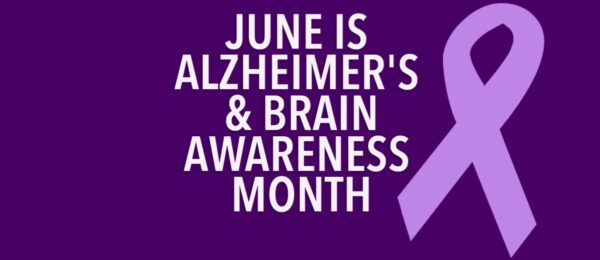
Welcome to June, the month dedicated to unlocking minds and fighting against Alzheimer’s and brain fog. As we delve into this crucial awareness campaign, let’s explore effective strategies to combat Alzheimer’s, enhance brain health, and reclaim our cognitive vitality.
Tackling Alzheimer’s:
Alzheimer’s disease poses a significant challenge to individuals and families worldwide. However, advancements in treatments offer hope. From pharmaceutical interventions to lifestyle modifications, there’s a range of approaches to explore. Consult with healthcare professionals to explore options like acetylcholinesterase inhibitors or memantine, which can help manage symptoms and slow disease progression.
Harnessing the Power of Vitamins:
Vitamins play a crucial role in brain health. Incorporating nutrient-rich foods and supplements can provide essential support. Vitamin E, for instance, acts as an antioxidant, protecting brain cells from damage. Omega-3 fatty acids, found in fish oil supplements, promote brain function and may reduce the risk of cognitive decline. Ensure you’re getting an adequate intake of vitamins B6, B12, and folate, as deficiencies have been linked to cognitive impairment.
Blood Tests for Early Detection:
Early detection of Alzheimer’s is key to effective management. Blood tests are emerging as promising tools for diagnosing Alzheimer’s disease, offering a non-invasive and cost-effective alternative to traditional methods. Biomarkers such as amyloid beta and tau proteins can indicate the presence of Alzheimer’s pathology years before symptoms manifest. Speak with your healthcare provider about incorporating these tests into your wellness routine for proactive monitoring.
Unlocking Genetic Insights:
Genetic predisposition plays a role in Alzheimer’s risk. DNA tests, such as genetic screening for the APOE ε4 allele, can provide valuable insights into individual susceptibility. While genetic factors influence Alzheimer’s risk, they don’t determine destiny. Armed with this knowledge, individuals can adopt lifestyle measures to mitigate risk factors and promote brain health.
This June, let’s unite in the fight against Alzheimer’s and brain fog. By embracing treatments, optimizing vitamin intake, leveraging blood tests for early detection, and unlocking genetic insights, we can empower ourselves in the battle for cognitive vitality. Together, we can unlock minds and pave the way for a brighter, brain-healthy future.
Stay tuned for more insights and actionable tips throughout Alzheimer’s and Brain Awareness Month!

As we stride into the future, one trend that’s not just making waves but becoming an integral part of our daily lives is wearable technology. The popularity of fitness trackers and smartwatches is set to soar even higher in 2024, becoming indispensable tools for those keen on optimizing their well-being.
Smart Fitness Tracking
Wearable technology serves as a personalized wellness companion, allowing individuals to effortlessly monitor their fitness journey. From step counts to heart rate monitoring, these devices offer real-time insights into physical activity, empowering users to make informed decisions about their health.
Motivation at Your Fingertips
What sets wearable tech apart is its ability to keep users motivated. Whether it’s reaching daily step goals, beating a personal best, or receiving real-time workout feedback, these devices provide the encouragement needed to stay on track and achieve fitness milestones.
Healthy Habits, Intelligent Living
Beyond mere fitness tracking, wearable technology champions a lifestyle of intelligent living and healthy choices. These devices have evolved to encompass a holistic approach to well-being, seamlessly integrating into our daily routines and promoting healthier decisions.
Optimized Humans Fitness App Integration
In this era of tech-driven wellness, the Optimized Humans Fitness App takes the concept of intelligent living a step further. Seamlessly syncing with popular wearable devices, the app harnesses the power of fitness tracking technology to provide users with a comprehensive overview of their well-being journey. Real-time data from wearables seamlessly integrates into personalized workout plans, enabling users to set and achieve fitness goals with precision.
From step counts recorded by your favorite fitness tracker to heart rate data from your smartwatch, the Optimized Humans Fitness App transforms raw metrics into actionable insights. It’s not just a fitness app; it’s a digital wellness companion that applies the latest in wearable technology to empower users on their journey to optimal health. Embrace intelligent living and a tech-infused wellness experience with the Optimized Humans Fitness App—where the power of wearables converges with personalized fitness for a holistic approach to well-being.
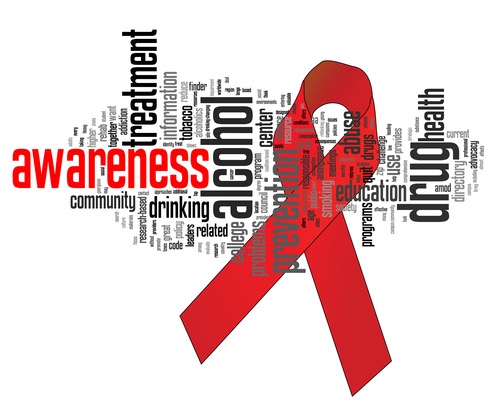


As April dawns upon us, it brings with it a poignant reminder: Stress Awareness Month. In a world where the hustle and bustle often blur the lines between urgency and serenity, it’s essential to pause and reflect on the silent yet significant struggle many of us face daily. Stress has become an unwelcome companion for countless individuals, affecting our mental, emotional, and physical well-being.
In this introductory piece, we embark on a journey to unravel the layers of stress, exploring its roots, manifestations, and impacts in our modern lives. Join me as we delve into the depths of this intricate phenomenon, shedding light on its prevalence and the imperative need to address it with empathy and understanding.
In the weeks to come, we’ll navigate through the labyrinth of stress, equipping ourselves with knowledge and strategies to combat its pervasive influence. Together, let’s embark on a transformative quest toward greater self-awareness and resilience in the face of adversity.
Stay tuned as we embark on this enlightening journey, seeking solace amidst the chaos and fostering a culture of compassion and support. It’s time to unveil the silent struggle and embrace the path to a more balanced and fulfilling life.
Are you ready to embark on this journey with me? Let’s navigate through the nuances of stress, arm ourselves with insights, and emerge stronger, wiser, and more resilient than ever before.
Unveiling the Silent Struggle
As April unfolds, casting its spotlight on Stress Awareness Month, it beckons us to pause and confront a prevalent yet often overlooked challenge: stress in the modern world. In the relentless pursuit of success, fulfillment, and societal expectations, stress has stealthily woven its threads into the fabric of our lives. It’s time to unravel the layers, understand its nuances, and, most importantly, empower ourselves with strategies to navigate this complex terrain.
Ways of Understanding Stress in the Modern World:
- Digital Overload and Constant Connectivity: The digital age has ushered in unprecedented connectivity, but it also brings a relentless barrage of information, notifications, and social comparisons. Our constant engagement with screens and the pressure to stay connected can contribute significantly to stress. Recognizing the impact of our digital interactions is the first step in understanding the modern dynamics of stress.
- Work-Life Integration Challenges: The traditional boundaries between work and personal life have blurred, ushering in the era of work-life integration. While this flexibility offers opportunities, it also poses challenges in establishing clear delineations. Understanding the demands of our multifaceted roles and acknowledging the need for balance is crucial for managing stress in a world that never truly disconnects.
- Social Pressures and Comparison Culture: The pervasive influence of social media has given rise to a culture of constant comparison. The carefully curated highlight reels of others can fuel feelings of inadequacy and intensify the pressure to measure up. Recognizing and challenging these societal expectations is essential for fostering a healthier mindset and mitigating stressors associated with comparison culture.
Positive Ways to Deal with Stress:
- Mindfulness and Meditation: Incorporating mindfulness practices and meditation into our daily routines can be a powerful antidote to stress. Taking time to focus on the present moment, breathe, and cultivate awareness helps break the cycle of anxious thoughts. Apps, guided sessions, or even simple moments of solitude can be transformative in building resilience.
- Establishing Boundaries: In a world where boundaries blur, setting clear limits is crucial. Learning to say no, prioritizing self-care, and carving out dedicated time for relaxation fosters a healthier balance. Establishing boundaries not only protects our well-being but also enhances our ability to navigate the challenges of the modern world.
- Cultivating a Supportive Network: Social connections are a cornerstone of well-being. Cultivating a supportive network of friends, family, or colleagues can provide invaluable emotional support. Sharing experiences, seeking advice, or simply having someone to lean on fosters a sense of community, reducing the isolating impact of stress.
Embarking on this journey to understand and navigate stress in the modern world requires both self-reflection and proactive steps toward positive change. In the coming weeks, we will delve deeper into these aspects, exploring practical strategies and insights to build resilience and embrace a more balanced and fulfilling life.
Are you ready to equip yourself with the tools needed to navigate the complexities of stress in the modern era? Stay tuned as we unravel the silent struggle together and discover pathways to a more empowered and serene existence.
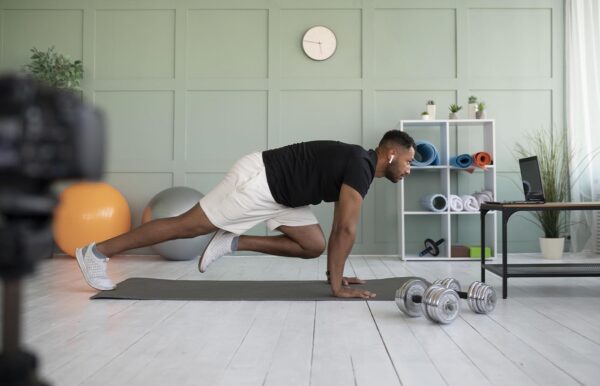
In the ever-evolving landscape of fitness, a paradigm shift is occurring—one that challenges the notion that impactful workouts are the sole path to physical prowess. Enter the realm of low-impact workouts, a trend that is not merely confined to recovery but is reshaping the way we approach fitness as a whole. In this blog post, we’ll explore the rising significance of low-impact exercises and how they are transitioning from recovery tools to primary components of holistic well-being.
Breaking Free from the Impact Myth
Traditionally, the fitness world has championed high-impact workouts for their ability to sculpt the body and elevate cardiovascular health. However, this often comes at a cost, with the potential for strain on joints and an increased risk of injury. Low-impact workouts challenge this narrative, offering an alternative that proves you don’t need to subject your body to constant pounding to achieve fitness goals.
Beyond Recovery: The Multi-Faceted Benefits
While low-impact exercises have long been associated with recovery, their benefits extend far beyond post-intensive workout care. These workouts are effective for building strength, improving flexibility, and enhancing overall fitness. From Pilates and barre to swimming and cycling, low-impact activities provide a full-body workout without the jarring impact on joints, making them sustainable for the long term.
Joint-Friendly Fitness
One of the key advantages of low-impact workouts is their gentle approach to joints. Whether you’re recovering from an injury, managing joint issues, or simply prioritizing joint health, these exercises offer a way to stay active without compromising your body’s longevity. The inclusivity of low-impact workouts makes fitness accessible to a broader demographic, fostering a more diverse and welcoming fitness community.
Mind-Body Connection: The Low-Impact Advantage
The nature of low-impact exercises allows individuals to focus on the mind-body connection without the distraction of impact-related discomfort. From the controlled movements of yoga to the rhythmic flow of aquatic exercises, these workouts provide an opportunity to cultivate mindfulness, breathing techniques, and a deeper understanding of one’s body.
The Future Fitness Landscape: A Blend of Impact and Ease
As we look towards the future of fitness, the amalgamation of high and low-impact workouts is becoming the norm. Fitness enthusiasts are recognizing the importance of balance in their routines, incorporating low-impact exercises not just for recovery but as a primary means of staying fit. The future fitness landscape is one that seamlessly integrates impactful and gentle workouts, offering a holistic approach to physical well-being.
Conclusion
Low-impact workouts are no longer confined to the sidelines of recovery—they are taking center stage in the evolution of fitness. Embracing these exercises not only safeguards joint health but also nurtures a sustainable, long-term approach to well-being. As we bid farewell to the notion that fitness success is synonymous with high impact, the rise of low-impact workouts signifies a broader understanding—that true fitness is a harmonious blend of strength, flexibility, and mindful movement. Get ready to witness the transformative power of low-impact workouts as they redefine the very essence of what it means to be fit.

